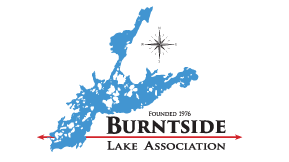Burntside Lake Association
Lake Vermilion AIS Team Kicks Off Project to Improve Watercraft Inspection Efficiency
FOR IMMEDIATE RELEASE
October 23, 2017
CONTACT: Jeff Lovgren, AIS Program Leader
Vermilion Lake Association
TOWER and COOK—With funding support from the Initiative Foundation, the Lake Vermilion aquatic invasive species (AIS) prevention team will lead a two-year project to further improve the efficiency of boat inspection work at 17 Lake Vermilion and 5 Burntside Lake public accesses.
Watercraft inspections at Vermilion and Burntside are conducted by North St Louis Soil and Water Conservation District (SWCD) in partnership with the Vermilion Lake Association and the Burntside Lake Association. All three organizations are involved in this pilot project.
“While boat inspections are the most effective means we have to prevent new AIS infestations, they are also labor intensive and our most expensive AIS undertaking,” said Jeff Lovgren, AIS program leader at Lake Vermilion. “Our partnership has an obligation to become even more efficient every year, and we’re pleased to receive a $33,000 grant to pilot some innovative ideas to make that happen.”
“The key to inspection efficiency is to deploy our inspectors at the busiest public accesses at the busiest times of the day for the entire boating season,” said Anita Provinzino, North St Louis SWCD administrator.
"To do that, we need an accurate model to predict arrivals and exits at public accesses,” observed Carrie Ohly-Cusack, Burntside AIS task force leader. “During the pilot project, we will gather data using magnetic traffic sensors, access cameras, and cameras overlooking the access parking lots at both lakes to supplement data from our inspectors.”
The traffic data at Burntside and Vermilion will be merged with information about fishing conditions, weather and wind direction, and the effect of fishing opener, weekends, and holidays to develop a predictive model. The intention is to use the model to predict boat traffic patterns and incorporate those into a flexible, fast-reaction staffing system.
During the second year of the project, the predictive traffic model will be tested at a third nearby lake with multiple public accesses before being shared more widely across Minnesota.
Funding for this project was provided from the Outdoor Heritage Fund, as appropriated by the Minnesota State Legislature. The Initiative Foundation selects innovative projects to support and oversees those projects.
